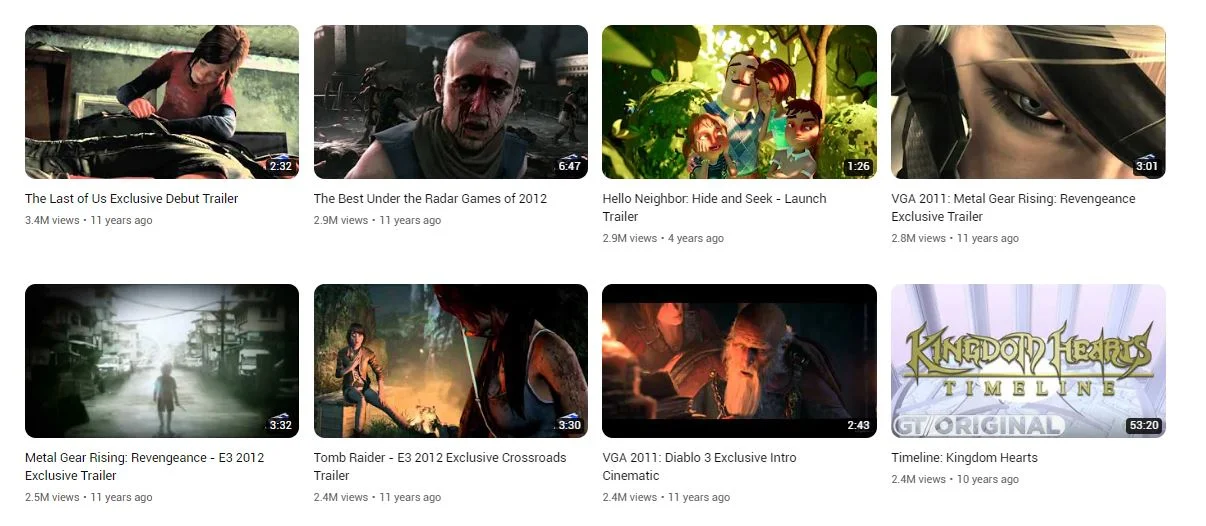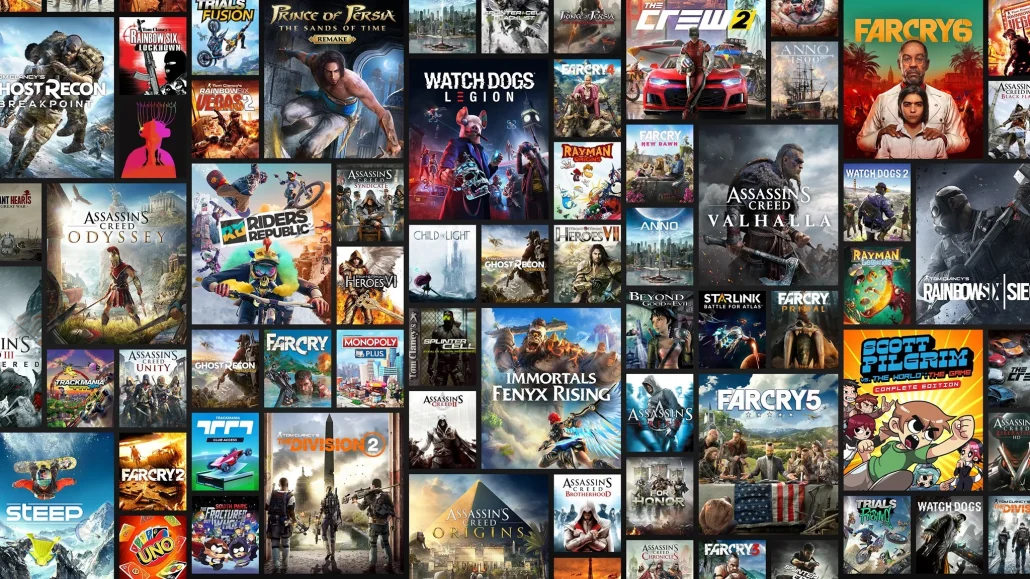In the ever-evolving landscape of the gaming industry, where compelling visuals and immersive experiences reign supreme, the role of the video game trailer has become more important than ever. A well-crafted trailer is more than just a glimpse into a game; it’s a carefully orchestrated work of art designed to entice, excite, and leave a lasting impression on potential players. As we delve into the intricacies of video game trailer production, we’ll uncover the purpose behind these cinematic masterpieces, explore the key stages of their creation, dissect the role of narration, and analyze the optimization techniques necessary for different platforms. Join Polydin on this journey as we navigate the nuances of teasers versus full trailers, address the challenges of the production process, and peer into the future of video game trailers, where innovation and storytelling will converge to shape tomorrow’s gaming experiences.
Understanding the Purpose of Video Game Trailers
In the dynamic realm of video game marketing, a well-crafted trailer serves as a potent ambassador, bridging the gap between developers and players. The primary purpose of a video game trailer extends far beyond mere promotion; it is a carefully orchestrated piece of visual storytelling aimed at capturing the essence of a game and generating intrigue. These succinct snippets of gameplay, cinematics, and carefully chosen soundscapes are the first point of contact for potential players, providing a tantalizing glimpse into the immersive worlds that await.
A key objective of video game trailers is to create a sense of anticipation and excitement. Developers strive to evoke an emotional response, whether it be through awe-inspiring graphics, intense action sequences, or a captivating narrative tease. The trailer acts as a cinematic invitation, inviting players to embark on a journey and become part of the gaming experience. Moreover, trailers function as a tool for setting the tone and establishing the unique selling points of a game, highlighting its key features and distinguishing it from the multitude of titles in the gaming landscape.
Beyond mere promotion, video game trailers also play a crucial role in building a community around a game. They become the focal point for discussions, speculations, and fan theories. Social media platforms light up with reactions and analyses, creating a buzz that can propel a game into the spotlight long before its release. In essence, the purpose of a video game trailer is not just to showcase game mechanics and stunning visuals but to cultivate a sense of anticipation and community engagement, ultimately contributing to the overall success of the game.
The Main Stages of Video Game Trailer Production
Video game trailer production is a meticulous process that involves several key stages, each crucial in shaping the final cinematic masterpiece. The journey begins with the conceptualization phase, where developers and marketing teams collaborate to define the trailer’s objectives, target audience, and overall theme. This stage sets the foundation for the entire production, aligning the trailer with the core essence of the game.
Once the concept is solidified, the pre-production stage commences. This phase involves scriptwriting, storyboarding, and planning the visual elements that will be featured in the trailer. It’s a delicate balance between revealing enough to intrigue the audience without giving away too much of the game’s plot. The creative vision takes shape, and decisions regarding the use of in-game footage, cinematics, and special effects are carefully considered.
Moving into the production stage, the planned elements are brought to life. Game developers collaborate with video production teams to capture high-quality footage, ensuring that the visuals align with the game’s actual graphics and gameplay. This phase demands precision and attention to detail, as the trailer’s success hinges on its ability to represent the gaming experience accurately.


Post-production is where the magic truly happens. Editors weave together the captured footage, add visual effects, synchronize sound, and fine-tune the pacing to create a seamless and captivating narrative. This stage requires a keen understanding of the target audience and the ability to craft a compelling story within the constraints of a short video duration.
Finally, the trailer enters the distribution stage, where it is strategically released across various platforms, social media channels, and gaming communities. The timing of the release is crucial, often aligning with major gaming events, conferences, or milestones in the game’s development stages. This strategic deployment maximizes visibility and generates buzz, propelling the trailer into the spotlight and capturing the attention of the gaming community.
Narration in Video Game Trailer Production
In the realm of video game trailer production, narration serves as a powerful tool for enhancing storytelling and evoking emotional responses from the audience. While some trailers rely solely on visual elements and music, narration can provide context, guide the viewer through the narrative, and establish a connection between the audience and the game’s world.
Narration in video game trailers often takes the form of a compelling voiceover, delivered with precision to complement the visuals on screen. This voiceover can be provided by a character within the game, a renowned narrator, or even a member of the development team, adding a personal touch to the storytelling process. The choice of narrator and the tone of their delivery are pivotal in conveying the intended atmosphere and emotion of the game.
The narration serves multiple purposes in video game trailers. It can introduce the game’s premise, providing essential context that helps viewers understand the world they are about to immerse themselves in. It can also emphasize key features, guiding the audience’s attention to specific gameplay mechanics, environments, or characters. Moreover, narration can inject personality into the trailer, fostering a connection between the audience and the game’s narrative, characters, or overarching themes.
However, the art of narration in video game trailers requires a delicate balance. Too much information can lead to spoilers, diminishing the element of surprise and reducing the incentive for players to explore the game further. On the other hand, too little information may leave the audience confused, failing to communicate the essence of the game effectively. Achieving the right balance between narration and visual storytelling is an intricate process that requires a deep understanding of the game’s narrative structure and the expectations of the target audience.
Optimizing Video Game Trailers for Different Platforms
Optimizing video game trailer production for different platforms is a crucial aspect of ensuring that the promotional material resonates with diverse audiences. Each gaming platform—whether it be PC, console, or mobile—comes with unique specifications, screen sizes, and hardware capabilities. To create a seamless experience, developers must tailor their trailers to meet the specific requirements of each platform.
This involves adjusting graphics and performance to suit the capabilities of different devices, ensuring that the essence of the game is preserved regardless of where it is viewed. Additionally, considerations for input methods must be taken into account, adapting the trailer to resonate with users using controllers, keyboards, or touchscreens. Successful optimization ensures that the trailer’s impact remains consistent, allowing it to captivate audiences across the diverse gaming ecosystem.
Teasers and full trailers serve distinct purposes in the realm of video game promotion. Teasers are tantalizing glimpses designed to generate intrigue and curiosity. They are concise, often relying on atmospheric visuals, cryptic hints, and a captivating soundtrack to pique the interest of the audience without revealing too much about the game’s content. Full trailers, on the other hand, provide a more comprehensive overview.
They delve deeper into the gameplay, narrative, and features, aiming to provide potential players with a more thorough understanding of what the game has to offer. Striking the right balance between teasing just enough to create anticipation and revealing sufficient content to engage the audience is a delicate art. The choice between a teaser and a full trailer depends on the marketing strategy, the stage of the game’s development, and the desired level of audience engagement.


Challenges in Trailer Production
The process of crafting a compelling video game trailer production is not without its challenges. One prominent hurdle is the need to balance the art of revelation. Trailers must capture the essence of the game without divulging too much information, avoiding spoilers that might diminish the player’s experience. Tight constraints on video duration add an extra layer of complexity, requiring precise editing to convey the narrative effectively.
Achieving synchronization between visuals and game sound design, especially in dynamic and action-packed sequences, is another challenge. Striking the right emotional chord and ensuring that the trailer resonates with the target audience further compounds the complexities.
Additionally, coordinating with development teams and aligning the trailer’s release with strategic marketing timelines are logistical challenges that demand meticulous planning. Navigating these challenges requires a combination of creative vision, technical expertise, and an in-depth understanding of the gaming community’s expectations.
Future of Video Game Trailers
The future of video game trailers is poised for exciting evolution. Technological advancements, especially in graphics and virtual reality, will enable even more immersive and visually stunning trailers. Interactive trailers, allowing viewers to engage with elements of the game directly within the trailer, may become more prevalent.
Personalized trailers, tailored based on individual player preferences and gameplay styles, could offer a more targeted marketing approach. With the rise of streaming platforms and social media, trailers may become more interactive and shareable, fostering increased community engagement. Moreover, advancements in artificial intelligence may play a role in creating trailers that dynamically adapt to viewer reactions in real time.
As the gaming industry continues to innovate, the future of video game trailers holds the promise of pushing creative boundaries, offering unique and personalized experiences, and further solidifying their role as pivotal components in the gaming ecosystem.
Conclusion
In conclusion, video game trailers are not merely promotional tools but intricate pieces of visual storytelling that shape players’ perceptions and expectations. The optimization for different platforms ensures a universal appeal, reaching audiences across the vast gaming landscape. The delicate dance between teasers and full trailers underscores the importance of strategic marketing, offering glimpses that tantalize while providing comprehensive insights.
However, the challenges in video game trailer production, from avoiding spoilers to synchronizing audio-visual elements, highlight the meticulous craftsmanship required in this art form. Looking ahead, the future of video game trailer production promises innovation, leveraging technology to create even more immersive and personalized experiences. As the gaming industry continues to evolve, video game trailers will remain integral, captivating audiences and serving as gateways to the virtual worlds that await exploration.


